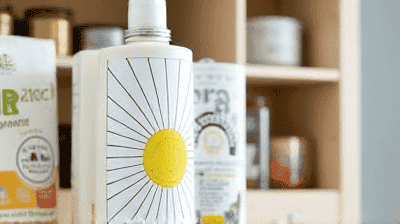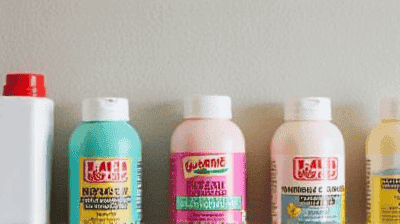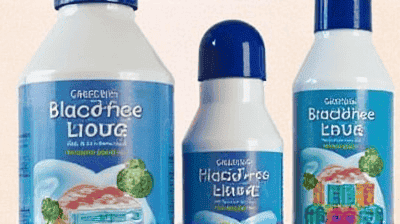
In an age where environmental awareness is crucial, the prevalence of plastic waste poses a significant threat to ecosystems, wildlife, and human health. Single-use plastics, in particular, have flooded our lives, contributing to pollution that is both visible and insidious. As consumers, we have the power to make informed choices that can reduce our plastic footprint and foster a healthier planet. Plastic-free living is not just an aspiration; it is a practical goal that can be achieved through small, effective swaps in our household habits.
Plastic pollution is pervasive and difficult to manage. Globally, millions of tons of plastic waste are generated each year, much of which ends up in landfills, oceans, and other natural environments. The impacts of plastic waste include:
Environmental Degradation: Plastic does not biodegrade; instead, it breaks down into smaller microplastics that persist in ecosystems, affecting soil and water quality.
Threat to Wildlife: Marine and terrestrial animals misidentify plastic as food, leading to ingestion that can cause injuries, reproductive issues, and death. Entanglement in plastic products can also lead to physical harm.
Human Health Risks: Chemicals used in plastic production, such as bisphenol A (BPA) and phthalates, can leach into food and water, potentially leading to hormonal disruptions and other health concerns.
Embracing a plastic-free lifestyle offers numerous benefits, including:
Environmental Protection: Reducing plastic consumption decreases the demand for new plastics, contributing to less production and waste.
Economic Savings: Many sustainable alternatives to plastic can also be cost-effective in the long run, resulting in savings on disposable products.
Healthier Living: Choosing natural materials over plastic can reduce exposure to harmful chemicals and enhance overall well-being.
Community Engagement: Living a plastic-free lifestyle encourages connection within communities, fostering shared values around sustainability and environmental stewardship.

The kitchen is often a major source of plastic waste in the household. Here are practical swaps to help reduce plastic consumption in this space:
Swap: Replace single-use plastic produce bags with reusable mesh or cotton bags.
Benefits: These bags can be washed and reused multiple times, reducing the need for disposable plastic bags in grocery stores. They also allow you to purchase in bulk and control how much you spend on produce.
Swap: Use glass or stainless steel storage containers instead of plastic containers for food storage.
Benefits: Glass and stainless steel are durable, non-toxic, and won’t leach chemicals into your food. They offer an effective way to store leftovers without contributing to plastic waste.
Swap: Utilize beeswax wraps or silicone food covers instead of plastic wrap.
Benefits: Beeswax wraps are biodegradable and reusable, making them a sustainable alternative to plastic wrap. They are effective for covering food and keeping it fresh while reducing plastic use.
Swap: Purchase food items in bulk using your own containers rather than buying pre-packaged goods.
Benefits: Buying in bulk reduces the amount of plastic used in packaging and often saves money. Many stores offer bulk sections for grains, nuts, and other staples.
The bathroom is another area where plastic waste can accumulate rapidly. Transitioning to more sustainable alternatives can significantly reduce your plastic footprint:
Swap: Instead of liquid soap and shampoo in plastic bottles, switch to bar soap and shampoo bars.
Benefits: These products typically come with minimal or no packaging, and they often contain fewer synthetic chemicals. Bar products can last longer than their liquid counterparts, providing further savings.
Swap: Replace disposable cotton pads with reusable cotton rounds or bamboo pads.
Benefits: Reusable pads can be washed and used many times, while disposable versions contribute to significant plastic waste when considering the packaging they come in.
Swap: Use toothpaste tablets instead of conventional toothpaste in plastic tubes.
Benefits: Many brands of toothpaste tablets offer packaging made from biodegradable or recyclable materials, reducing plastic waste. Tablets also eliminate the risk of tube wastage.
Swap: Opt for a safety razor instead of disposable razors.
Benefits: Safety razors are designed to last a lifetime, and their blades can be easily replaced, significantly reducing plastic waste from disposable razors.
Beyond the kitchen and bathroom, there are lifestyle changes that can contribute to a plastic-free life:
Swap: Invest in a stainless steel or glass water bottle instead of buying bottled water.
Benefits: A reusable water bottle can save hundreds of plastic bottles per year, and it keeps your drinks cold or hot without leaching harmful chemicals.
Swap: Choose cloth napkins and towels over single-use paper products.
Benefits: Using washable cloth for napkins and towels can reduce the amount of disposable paper products contributing to waste, offering both environmental benefits and saving money.
Swap: Consider using cloth diapers, reusable menstrual cups, or cloth pads instead of disposable options.
Benefits: Both cloth diapers and reusable menstrual products can save significant amounts of plastic waste. They are also often more comfortable and cost-effective over time.
Swap: Ditch plastic cleaning supply bottles for homemade or bulk cleaning solutions stored in reusable containers.
Benefits: Making your own cleaning products using vinegar, baking soda, and essential oils eliminates the need for plastic packaging while offering a non-toxic cleaning solution for your home.
Creating a plastic-free home environment extends to how we approach gardening and household supplies:
Swap: Use natural materials for garden supplies, such as biodegradable plant pots and compostable seed trays.
Benefits: Biodegradable gardening items reduce plastic use and can enrich the soil as they decompose, promoting a healthy garden ecosystem.
Swap: Replace plastic toothbrushes with bamboo toothbrushes.
Benefits: Bamboo toothbrushes are biodegradable and have less environmental impact than conventional plastic brushes. They provide an effective cleaning option while reducing plastic waste.
Swap: Use natural fiber cleaning products like scrubbers and mops instead of synthetic ones.
Benefits: Products made of natural fibers often have a smaller ecological footprint and can be composted at the end of their life cycle.
Transitioning to a plastic-free lifestyle can be challenging but rewarding. Here are some tips to help you succeed:
Begin with a few easy swaps that fit your lifestyle. Over time, gradually replace additional products as you become more comfortable.
Learn about plastic pollution, its impacts, and the alternatives available. The more you know, the more informed your choices will be.
Engage your family in the swap process. Discuss why reducing plastic waste is important and encourage everyone to participate in making sustainable choices.
Make a list before shopping to avoid impulse buys that lead to unnecessary plastic packaging. Aim for products with minimal or compostable packaging.
Share your journey with friends and family. Your actions can inspire others, creating a ripple effect that promotes a more sustainable community.
Transitioning to a plastic-free lifestyle can bring challenges. Here are some common hurdles and how to address them:
In some areas, finding plastic-free alternatives can be difficult. Consider online shopping or local zero-waste shops to find the products you need.
While some alternatives may have a higher upfront cost, remember that they often last longer and can save money over time. Consider the long-term savings of reusable products and bulk buying.
Changing established habits takes time. Plan ahead for outings, carry reusable bags and containers, and keep reusable items visible to reinforce the practice.
If friends or family are not as committed to reducing plastic waste, you may feel awkward or unsupported. Focus on your goals and lead by example, showing others the benefits of a plastic-free lifestyle.
While individual actions play a critical role in reducing plastic waste, broader systemic changes are also essential:
Support policies that limit single-use plastics and promote sustainable materials. Engage with your local representatives and advocate for regulations that encourage eco-friendly practices.
Participate in or organize local cleanup efforts to reduce plastic waste in your community. Collaborating with others can create awareness and foster a community spirit focused on sustainability.
Choose to purchase from local businesses that prioritize eco-friendly products and initiatives. Your support can help contribute to a greener local economy.
Promote educational campaigns in local schools and community centers to raise awareness about the effects of plastic pollution and the benefits of sustainable living.

Plastic pollution represents a significant challenge that affects ecosystems, wildlife, and human health. However, through practical steps and conscious choices, we can reduce our reliance on plastic and work towards a more sustainable future. Adopting a plastic-free lifestyle begins with simple swaps that can have a substantial impact on your household waste.
By embracing alternatives, engaging your community, and advocating for systemic change, we can collaboratively reduce plastic waste and foster an environment that prioritizes sustainability. The journey toward plastic-free living is not only about eliminating plastics but also about nurturing a mindset that values ecological responsibility, community engagement, and personal health. By starting today, you contribute to a healthier planet for generations to come.